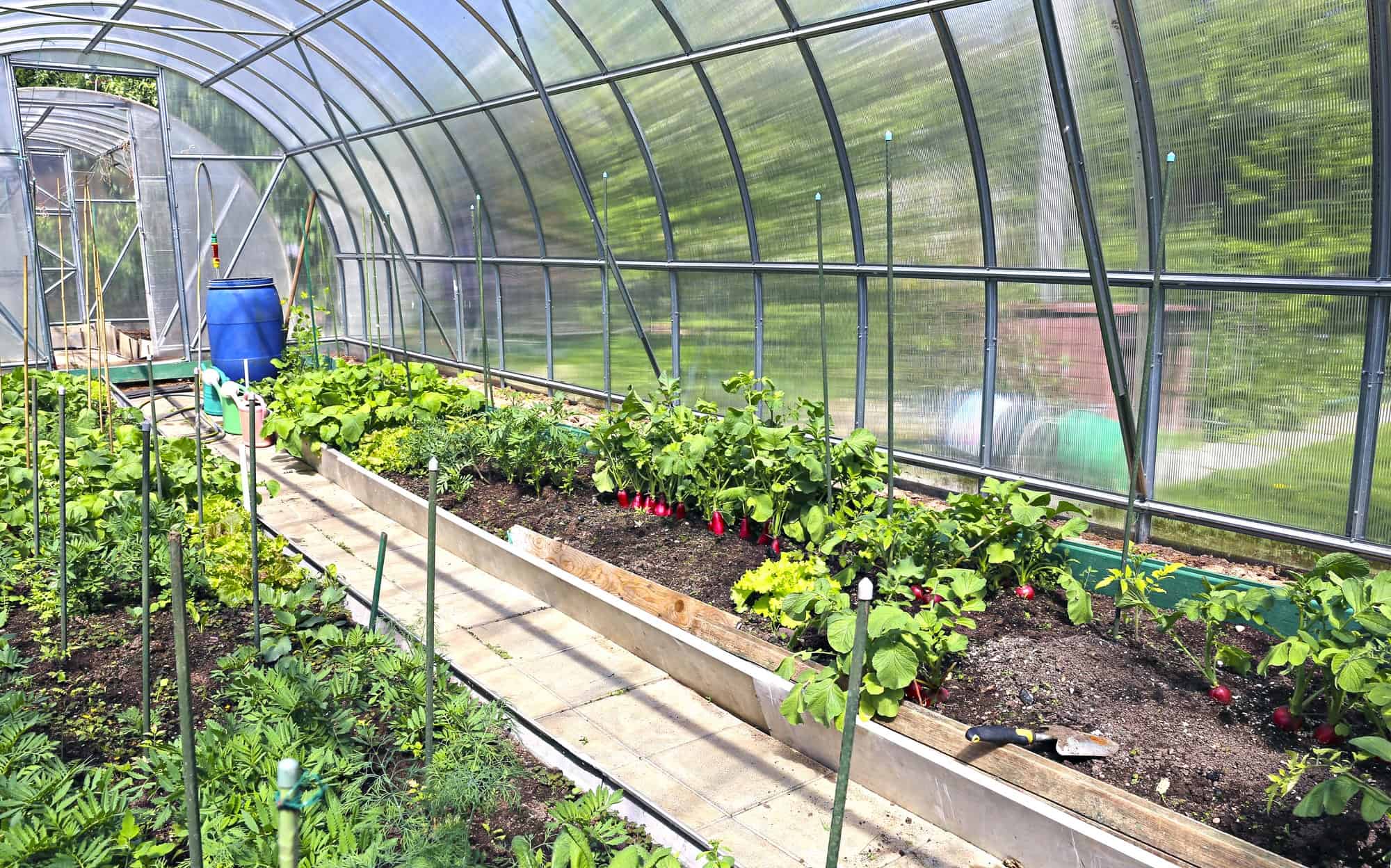Home>Gardening Techniques>Plant Care>How Long Does It Take For Rosemary To Sprout?


Plant Care
How Long Does It Take For Rosemary To Sprout?
Published: January 28, 2024
Learn the best plant care tips for sprouting rosemary. Discover how long it takes for rosemary to sprout and how to ensure successful growth.
(Many of the links in this article redirect to a specific reviewed product. Your purchase of these products through affiliate links helps to generate commission for Chicagolandgardening.com, at no extra cost. Learn more)
Table of Contents
Introduction
Introduction
Welcome to the fascinating world of rosemary cultivation! Whether you’re a seasoned gardener or just beginning your green-fingered journey, understanding the intricacies of rosemary germination is a crucial aspect of nurturing this aromatic herb. Rosemary, with its fragrant, needle-like leaves and delicate blue flowers, has been cherished for centuries as a culinary herb, a potent medicinal plant, and an ornamental addition to gardens.
Embarking on the journey of cultivating rosemary from seeds is a rewarding experience that requires patience, care, and a deep understanding of the germination process. In this article, we’ll explore the factors that influence rosemary germination, the optimal conditions for sprouting rosemary seeds, the step-by-step process of spurring the germination of rosemary, and the timeframe you can expect for your rosemary seeds to sprout.
By delving into the nuances of rosemary germination, you’ll gain valuable insights that will empower you to foster the growth of this beloved herb with confidence and expertise. So, let’s embark on this horticultural adventure and unravel the mysteries of rosemary germination together!
Factors Affecting Rosemary Germination
Several factors play a pivotal role in influencing the germination of rosemary seeds. Understanding these variables is essential for creating an environment conducive to successful sprouting. Here are the key factors that impact the germination of rosemary:
- Seed Quality: The quality and viability of the rosemary seeds directly affect germination. Fresh, high-quality seeds with good genetic potential are more likely to sprout robustly.
- Temperature: Rosemary seeds require a consistent and optimal temperature range for germination. Warm soil temperatures, ideally between 65-70°F (18-21°C), promote successful sprouting.
- Moisture: Adequate moisture is crucial for initiating the germination process. However, excessive water can lead to seed rot, emphasizing the need for well-draining soil to prevent waterlogging.
- Light: While some seeds require light for germination, rosemary seeds are an exception and actually germinate more effectively in darkness.
- Air Circulation: Proper air circulation is essential to prevent fungal diseases and ensure that the seeds receive an adequate supply of oxygen.
- Soil Quality: The composition and pH of the soil significantly impact germination. Well-draining, sandy loam soil with a slightly acidic to neutral pH (6.0-7.0) is ideal for rosemary germination.
By carefully considering and managing these factors, you can create an optimal germination environment that maximizes the likelihood of successful rosemary sprouting. Now, let’s delve into the specific conditions required for facilitating the germination of rosemary seeds.
Ideal Conditions for Rosemary Germination
Creating the ideal conditions for rosemary germination is essential for nurturing the growth of healthy seedlings. By addressing the specific requirements of rosemary seeds, you can significantly enhance the likelihood of successful germination. Here are the key elements that constitute the ideal conditions for sprouting rosemary seeds:
- Temperature: Rosemary seeds thrive in warm environments. Maintaining a consistent soil temperature of 65-70°F (18-21°C) provides the optimal conditions for germination. Using a heat mat or placing the seed trays in a warm, sunny location can help achieve and maintain the desired temperature.
- Moisture: While it’s crucial to ensure that the soil is consistently moist, it’s equally important to avoid overwatering, as excessively wet conditions can lead to seed rot. A fine balance must be struck to provide adequate moisture without waterlogging the soil.
- Soil Type: Rosemary seeds thrive in well-draining, sandy loam soil. This type of soil structure prevents water accumulation around the seeds, reducing the risk of rot and fungal diseases.
- pH Level: Maintaining a slightly acidic to neutral soil pH in the range of 6.0-7.0 is conducive to rosemary germination. Testing the soil pH and amending it as necessary ensures an optimal environment for seed sprouting.
- Light: Unlike some seeds that require light for germination, rosemary seeds prefer darkness. Covering the seed trays with a light-blocking material or placing them in a dark environment promotes successful sprouting.
- Air Circulation: Providing adequate air circulation is essential for preventing the onset of fungal diseases and ensuring that the seeds receive a fresh supply of oxygen, contributing to healthy germination.
By meticulously attending to these ideal conditions, you can create a nurturing environment that supports the successful germination of rosemary seeds. Now, let’s explore the step-by-step process of spurring the germination of rosemary seeds.
Steps to Sprout Rosemary
Embarking on the journey of sprouting rosemary seeds involves a series of carefully orchestrated steps to create an optimal environment that encourages successful germination. By following these guidelines, you can enhance the likelihood of robust seedling growth. Here are the essential steps to sprout rosemary seeds:
- Selecting Quality Seeds: Begin by acquiring high-quality rosemary seeds from a reputable source. Fresh, viable seeds with good genetic potential form the foundation for successful germination.
- Preparing the Planting Containers: Choose clean, sterile seed trays or pots with drainage holes to facilitate proper moisture management. Fill the containers with well-draining, sandy loam soil, ensuring that it is slightly moist but not waterlogged.
- Sowing the Seeds: Gently press the rosemary seeds into the soil surface, aiming for even spacing to prevent overcrowding once the seeds germinate. Lightly cover the seeds with a thin layer of soil, maintaining a depth of approximately twice the diameter of the seeds.
- Providing Darkness: As rosemary seeds prefer darkness for germination, cover the seed trays with a breathable, light-blocking material or place them in a dark environment to create the ideal conditions for sprouting.
- Maintaining Optimal Temperature: Place the seed trays in a warm, consistently heated area with a temperature range of 65-70°F (18-21°C). Using a heat mat can help maintain the desired soil temperature for successful germination.
- Managing Moisture: Monitor the moisture levels in the soil closely, ensuring that it remains consistently moist but not waterlogged. Using a spray bottle to mist the soil can help maintain the appropriate moisture levels without disrupting the seeds.
- Ensuring Air Circulation: Position the seed trays in an area with adequate air circulation to prevent the onset of fungal diseases and promote healthy germination. Avoid placing the trays in excessively humid or stagnant environments.
- Monitoring and Patience: Consistently monitor the seed trays for any signs of germination, which typically occurs within 2-3 weeks. Exercise patience and refrain from disturbing the seeds during this crucial germination period.
By diligently following these steps and providing the necessary care, you can set the stage for the successful sprouting of rosemary seeds. Now, let’s explore the timeframe you can expect for your rosemary seeds to germinate.
Timeframe for Rosemary Germination
Patience is a virtue when it comes to the germination of rosemary seeds. Understanding the typical timeframe for germination enables you to anticipate the emergence of seedlings and adjust your care regimen accordingly. While individual variances may occur, the following timeframe provides a general guideline for rosemary germination:
Under optimal conditions, rosemary seeds typically germinate within 14 to 21 days after sowing. However, it’s important to note that certain factors, such as temperature variations and seed quality, can influence the germination timeframe. Warmer temperatures within the recommended range of 65-70°F (18-21°C) can expedite the germination process, while cooler conditions may slightly prolong the timeframe.
Consistent moisture levels, appropriate soil temperature, and the provision of darkness are key factors that contribute to timely germination. By meticulously maintaining these conditions, you can maximize the likelihood of seeds sprouting within the expected timeframe.
It’s important to exercise patience and refrain from prematurely disturbing the seed trays during the germination period. While some seeds may germinate earlier than others, the majority of the seeds should exhibit signs of sprouting within the anticipated timeframe.
Once the seedlings emerge, continue to provide the optimal conditions for their growth, including adequate moisture, proper air circulation, and gradual acclimatization to light. As the seedlings develop, you can gradually introduce them to brighter light conditions, preparing them for eventual transplantation into larger containers or outdoor garden beds.
By understanding and respecting the natural timeframe for rosemary germination, you can foster the healthy development of seedlings and set the stage for a thriving rosemary garden. With the germination process demystified, you are well-equipped to embark on this rewarding horticultural journey with confidence and anticipation.
Conclusion
Cultivating rosemary from seeds encompasses a captivating journey filled with anticipation, care, and the joy of witnessing new life emerge from tiny, dormant seeds. By delving into the intricacies of rosemary germination, we’ve unveiled the fundamental factors that influence the sprouting of these aromatic herbs.
Understanding the significance of seed quality, temperature, moisture, soil type, pH levels, light, and air circulation empowers you to create an optimal environment that fosters successful germination. By meticulously attending to these factors and following the essential steps for sprouting rosemary seeds, you can set the stage for the emergence of healthy seedlings.
Throughout the germination process, patience becomes a valuable ally, as rosemary seeds typically sprout within 14 to 21 days under optimal conditions. By respecting the natural timeframe for germination and providing unwavering care, you pave the way for the growth of robust seedlings that will eventually flourish into thriving rosemary plants.
As you embark on this horticultural adventure, may the knowledge gained serve as a guiding light, instilling confidence and enthusiasm in your journey of nurturing rosemary from seeds. Embrace the process with patience, attentiveness, and a deep reverence for the wonders of nature, knowing that each step you take contributes to the flourishing of these cherished herbs.
With the mysteries of rosemary germination unveiled and the roadmap to successful sprouting at your fingertips, you are poised to embark on a rewarding and enriching experience of cultivating this beloved herb. May your green thumb flourish, and may the aromatic allure of rosemary grace your gardens and culinary creations for years to come.





